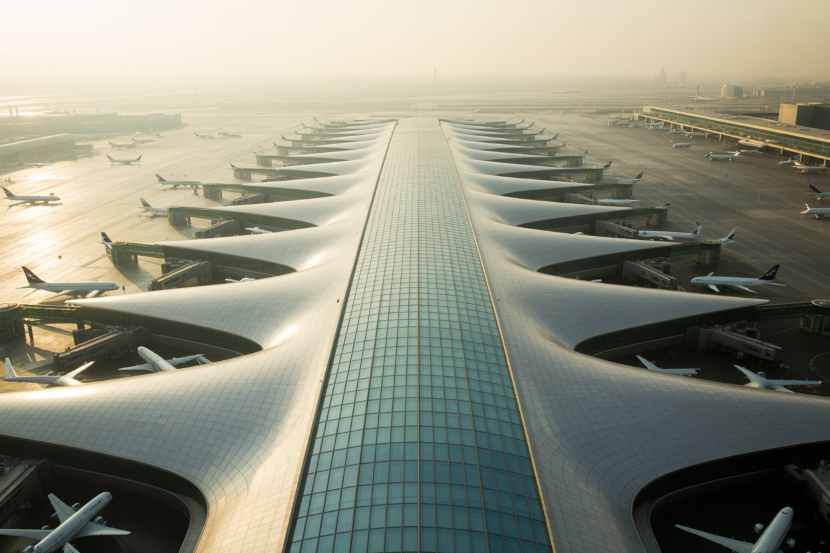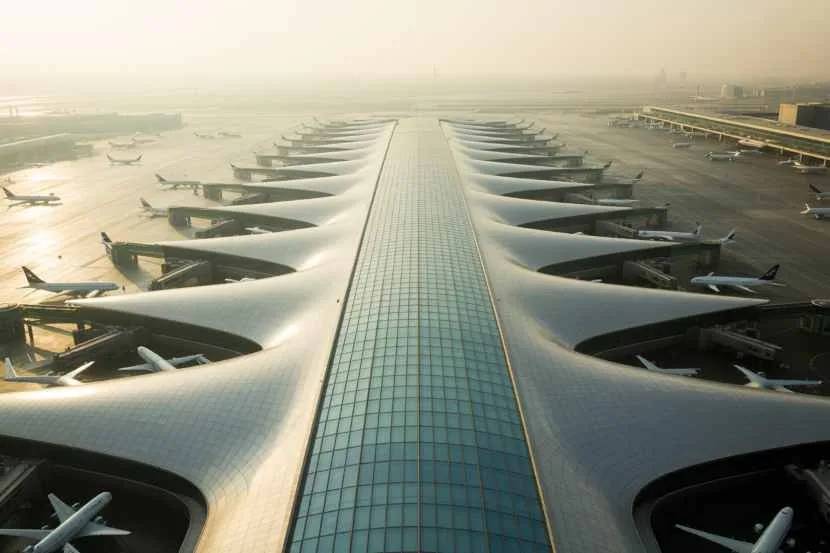Published on
August 26, 2025

In a decisive initiative expected to reinforce Egypt’s ambitions as a leading global tourism hub, Prime Minister Mostafa Madbouly recently oversaw the latest assessment of the ongoing construction of Terminal 4 at Cairo International Airport. This flagship modernization is designed to augment the capacity of Egypt’s most trafficked airport, integrating cutting-edge technologies that will refine the passenger experience and align operational protocols with benchmarking standards employed at the world’s leading facilities. Standing as a cornerstone of the national strategy to consolidate Egypt’s status as an international gateway, the terminal’s inauguration is anticipated to provide essential support to a tourism sector already registering sustained and accelerated growth.
Cairo International, as the nation’s foremost entry point, is experiencing escalated levels of passenger traffic and, consequently, a pressing imperative for infrastructural enhancement. The designated terminal is projected to materially augment the airport’s throughput capability, thereby fortifying its capacity to service an expanding spectrum of foreign and domestic visitors. More than a mere expansion of footprint, the initiative entails a sequenced modernization of the country’s travel architecture, one that seeks to marry enhanced operational efficiency with environmental stewardship while inherently lowering transactional frictions for the visitor.
A Global Model for Airport Design and Operations
Prime Minister Madbouly emphasized that Terminal 4 is more than just a construction project—it’s a transformative step that positions Cairo International Airport as a model for airports worldwide. With international travel standards continually evolving, the new terminal will integrate cutting-edge technologies and design features that will enable Cairo Airport to meet the expectations of modern travelers. It is set to become a global benchmark in airport design, offering efficient operations, enhanced amenities, and a superior travel experience.
The new terminal is set to accommodate 30 million passengers annually, boosting Cairo International Airport’s overall capacity to nearly 60 million passengers per year. This significant increase in capacity will allow the airport to manage the growing influx of international tourists and provide more seamless connectivity to global destinations, benefiting Egypt’s tourism sector. This expansion will facilitate smoother operations, reduce congestion, and cater to the increasing demand for travel to Egypt’s world-renowned historical sites and natural wonders.
Incorporating Smart Technologies and Sustainability in Design
One of the most exciting features of the Terminal 4 project is the integration of smart technologies designed to improve both the passenger experience and airport efficiency. The new terminal will incorporate biometric screening, automated check-in kiosks, and AI-driven baggage handling systems, significantly reducing wait times and improving the flow of travelers. These technologies align with global trends towards digitized and automated airport experiences, making it easier for tourists to navigate through one of the region’s busiest airports.
In addition to enhancing operational efficiency, the terminal will be built with sustainability at its core. Solar-powered car parks, energy-efficient lighting, and eco-friendly building materials will contribute to making Terminal 4 a green airport, reflecting Egypt’s commitment to sustainable infrastructure development. As global tourism increasingly emphasizes sustainability, Cairo International Airport is setting a strong example of how major transportation hubs can embrace environmentally friendly practices.
A Boost for Egypt’s Tourism Industry
Tourism is a cornerstone of Egypt’s economy, with millions of visitors flocking to explore the country’s iconic landmarks, including the Great Pyramids of Giza, the Nile River, and the ancient ruins of Luxor and Alexandria. However, despite the growing number of visitors, the existing infrastructure at Cairo International Airport was becoming increasingly inadequate for handling the high volume of passengers. The completion of Terminal 4 will address these capacity issues and ensure that Egypt can continue to welcome tourists in a way that reflects its rich cultural heritage and world-class hospitality.
The new terminal will not only handle increased passenger traffic but also introduce more high-quality services for tourists, such as luxury lounges, expanded duty-free shopping areas, and diverse dining options offering local and international cuisine. For international visitors, the improved services will offer a smoother and more comfortable arrival and departure experience, which is essential in attracting repeat visits and encouraging longer stays.
With its enhanced capacity, streamlined operations, and modern amenities, Cairo International Airport will become a more attractive entry point for tourists exploring Egypt. This development is expected to lead to a significant rise in international arrivals, positively impacting the country’s tourism revenue and supporting Egypt’s broader economic goals.
Enhanced Regional Connectivity and Economic Growth
Terminal 4 will also enhance regional connectivity by improving access to Egypt’s tourism hotspots and encouraging tourism from neighboring regions. As Egypt is a key transit hub for tourists traveling to and from Africa, the Middle East, and Europe, the terminal’s expanded capacity will enable better connectivity for travelers looking to explore not only Cairo but also other Egyptian cities such as Sharm El-Sheikh, Hurghada, and Luxor.
The expected increase in tourism will contribute to various sectors of Egypt’s economy, including hospitality, retail, transportation, and the service industry. Local businesses and international hotel chains are set to benefit from the increase in visitors, while tourism-dependent industries will see a boost in employment opportunities. The ripple effect of this growth will be felt across Egypt, with the tourism sector playing an instrumental role in driving sustainable economic development.
A Sustainable Future for Egyptian Aviation
The Terminal 4 project is part of a broader vision for modernizing Egypt’s aviation infrastructure, which aligns with Egypt Vision 2030, a national plan designed to enhance the country’s overall development. As part of this vision, Egypt has committed to improving its transport infrastructure, expanding its tourism sector, and embracing new technologies to ensure sustainable growth. Terminal 4 is a significant milestone in this journey, promising to set a global standard for modern, efficient, and environmentally friendly airport facilities.
The project will also ensure that Cairo International Airport remains competitive on the global stage, attracting airlines, international travelers, and global investors. By providing a more attractive and functional gateway for tourists and airlines alike, Cairo International Airport will play a crucial role in Egypt’s long-term growth strategy.
A Bright Future for Egypt’s Tourism Sector
The completion of Cairo International Airport’s Terminal 4 marks the beginning of a new era for Egypt’s aviation and tourism industries. As the gateway to one of the world’s most historically significant and beautiful countries, the new terminal will enhance Egypt’s ability to welcome international travelers with efficiency, comfort, and state-of-the-art technology. This major infrastructure project promises to elevate Egypt’s global standing as a tourism destination and further support the country’s economic growth through its robust and sustainable travel industry.
With the integration of smart technologies, sustainability initiatives, and world-class services, Terminal 4 will not only transform Cairo International Airport but also boost Egypt’s tourism sector for years to come, providing a seamless, enjoyable experience for travelers while supporting the growth of the Egyptian economy.







